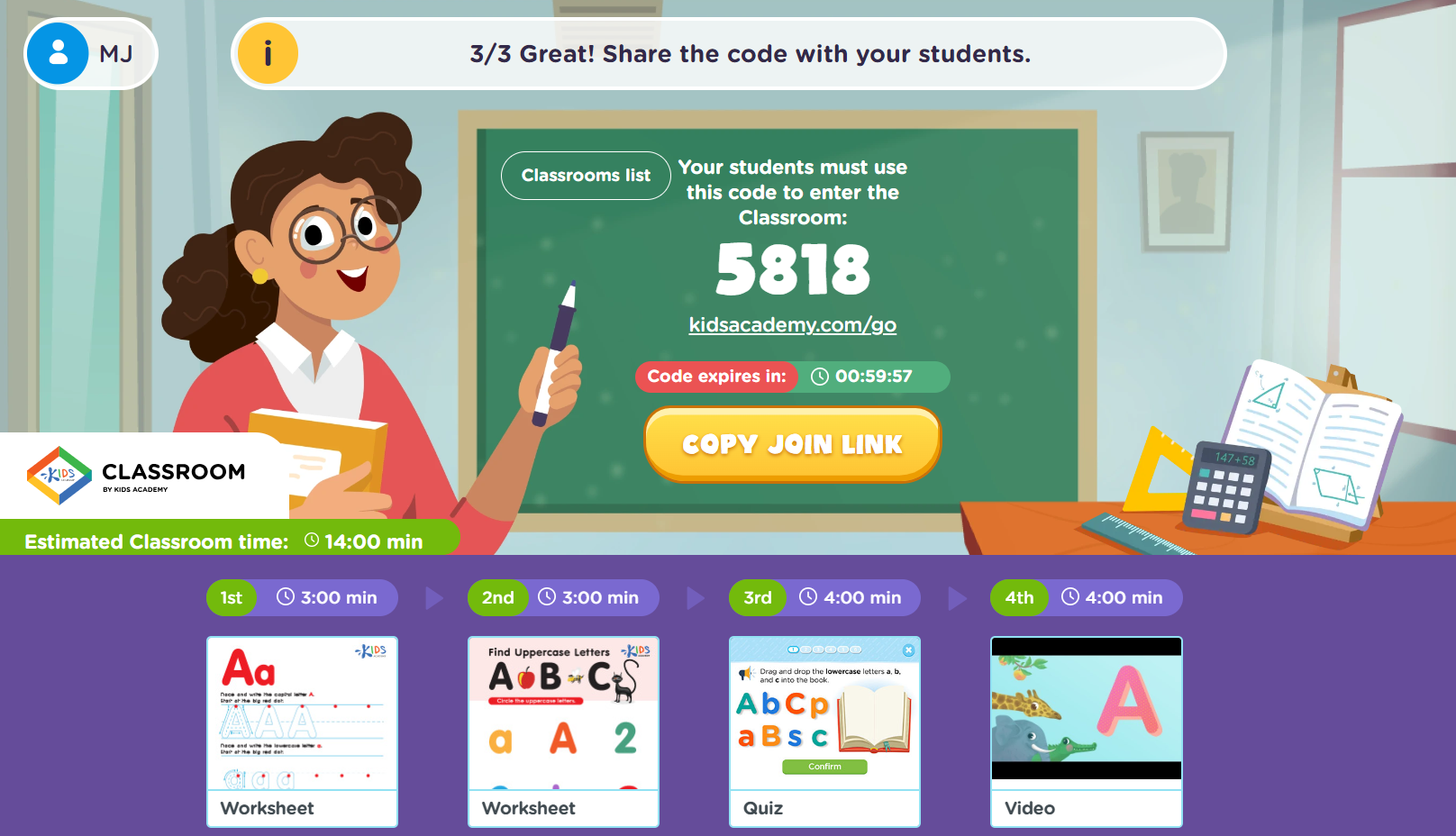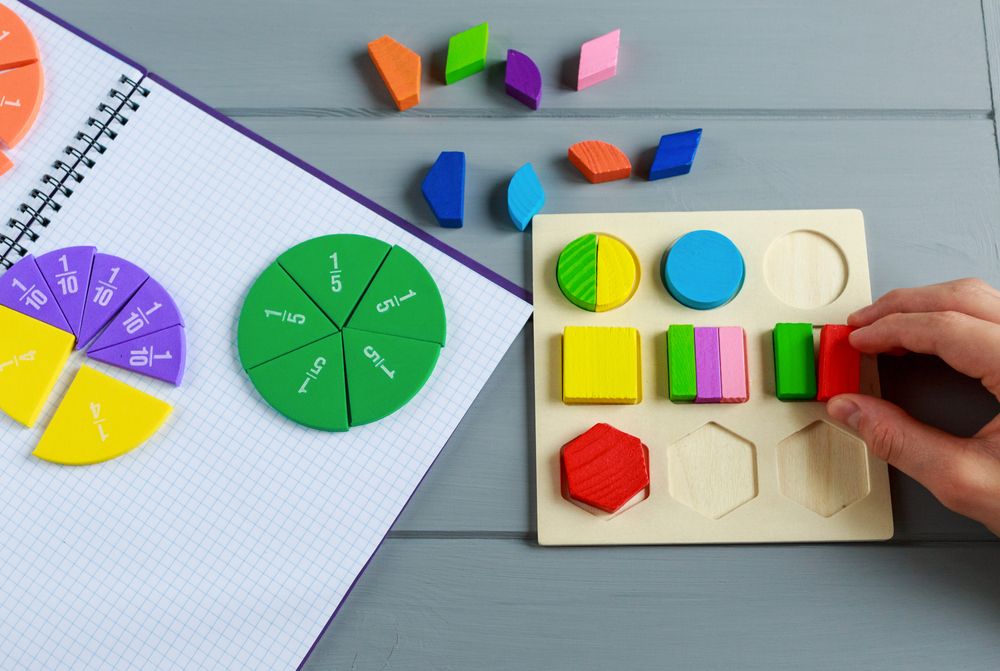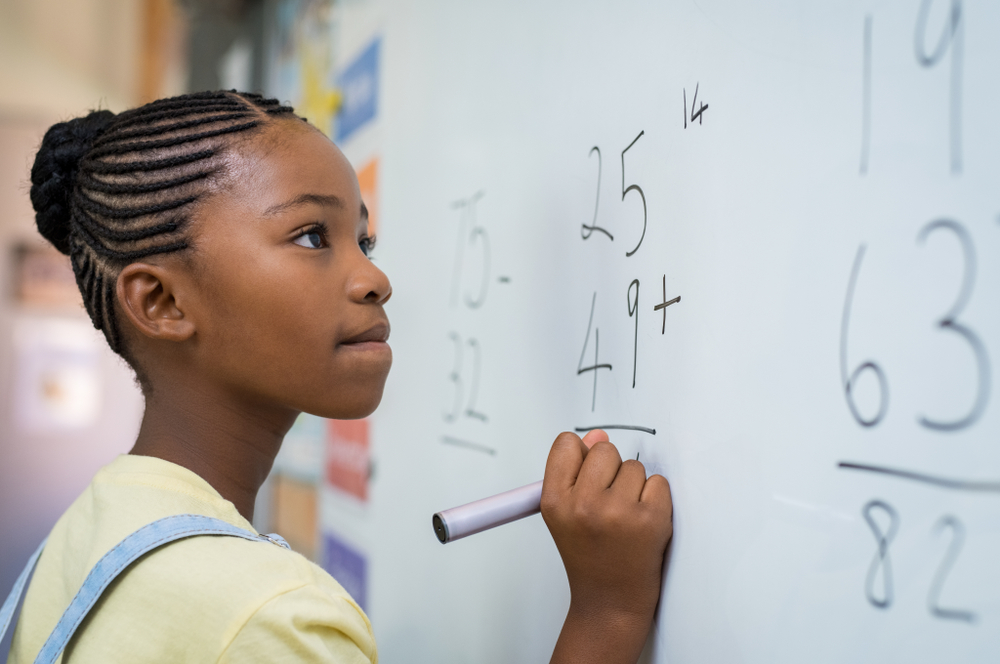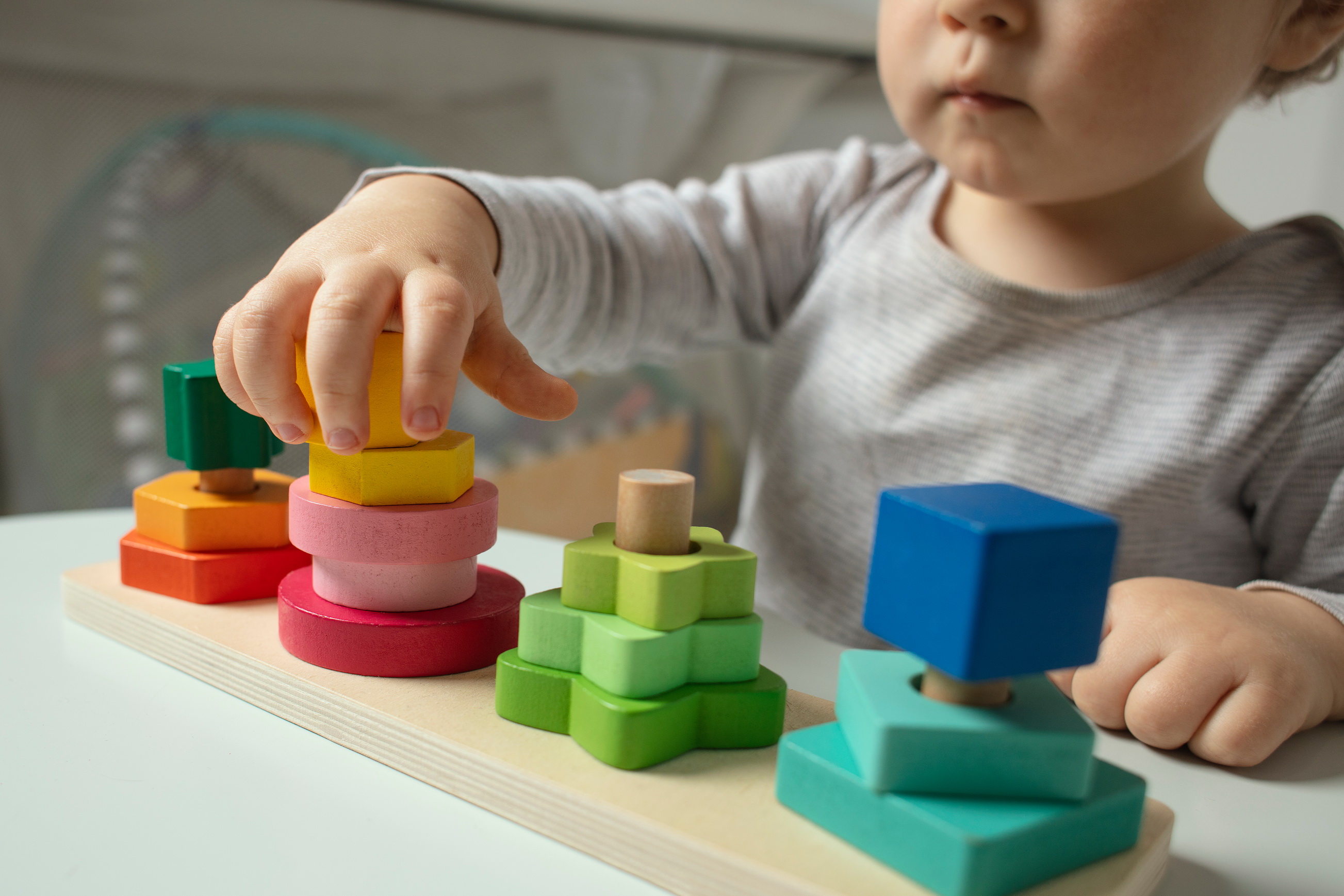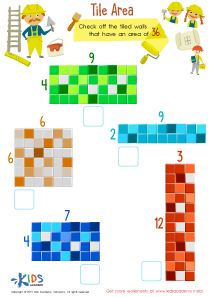Normal Comparison Worksheets for Ages 6-7
7 filtered results
-
From - To
Discover our engaging Normal Comparison Worksheets designed specifically for children ages 6-7! These worksheets provide a fun and interactive way to help young learners develop essential comparison skills. Focusing on key concepts such as greater than, less than, and equal to, our resources encourage kids to make meaningful comparisons while building their confidence in mathematics. Whether in the classroom or at home, these printable worksheets offer a variety of activities that promote critical thinking and logical reasoning. Give your child the tools they need for a successful math journey with our thoughtfully crafted comparison worksheets today!
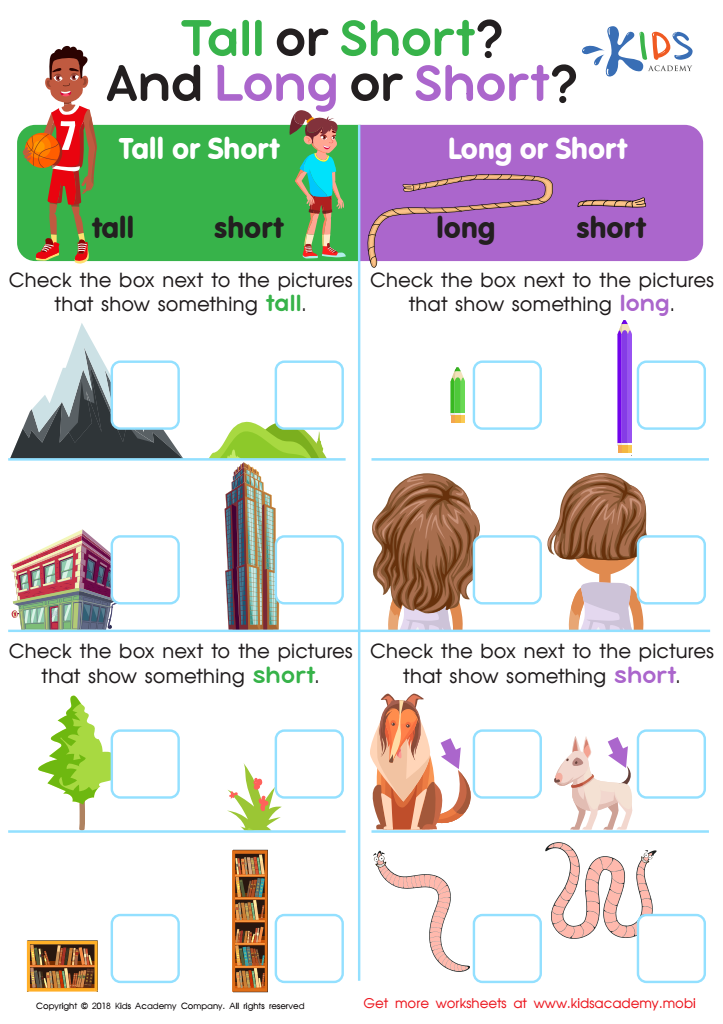

Tall or Short and Long or Short? Worksheet
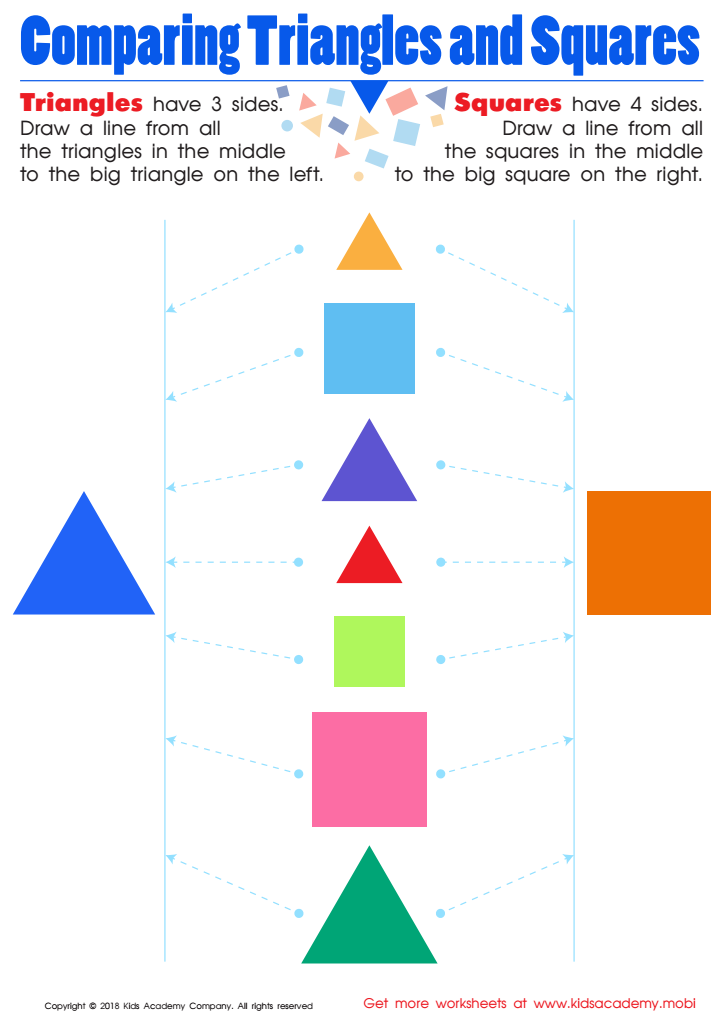

Comparing Triangles Squares Worksheet
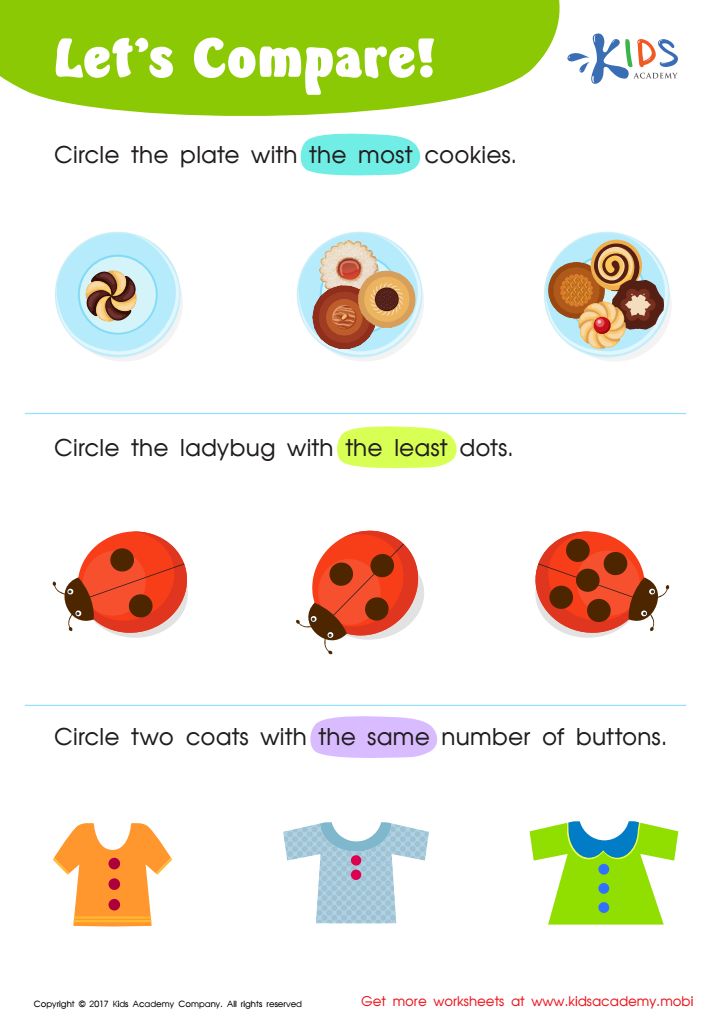

Matching: Classifying Toys by Size Worksheet
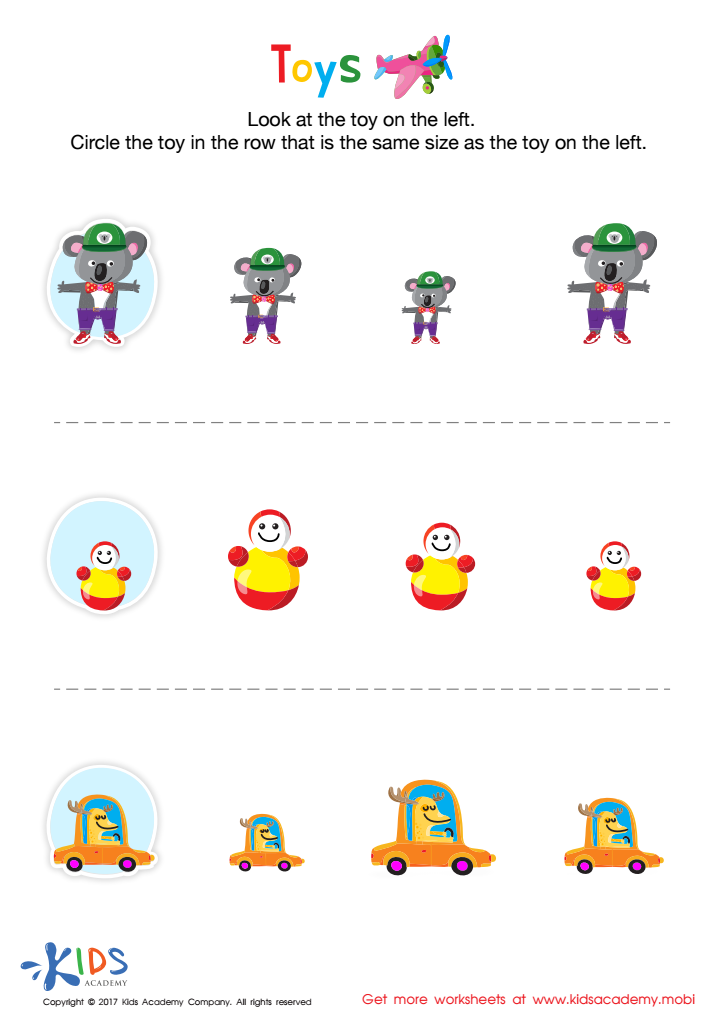

Matching: Classifying Toys by Size Worksheet
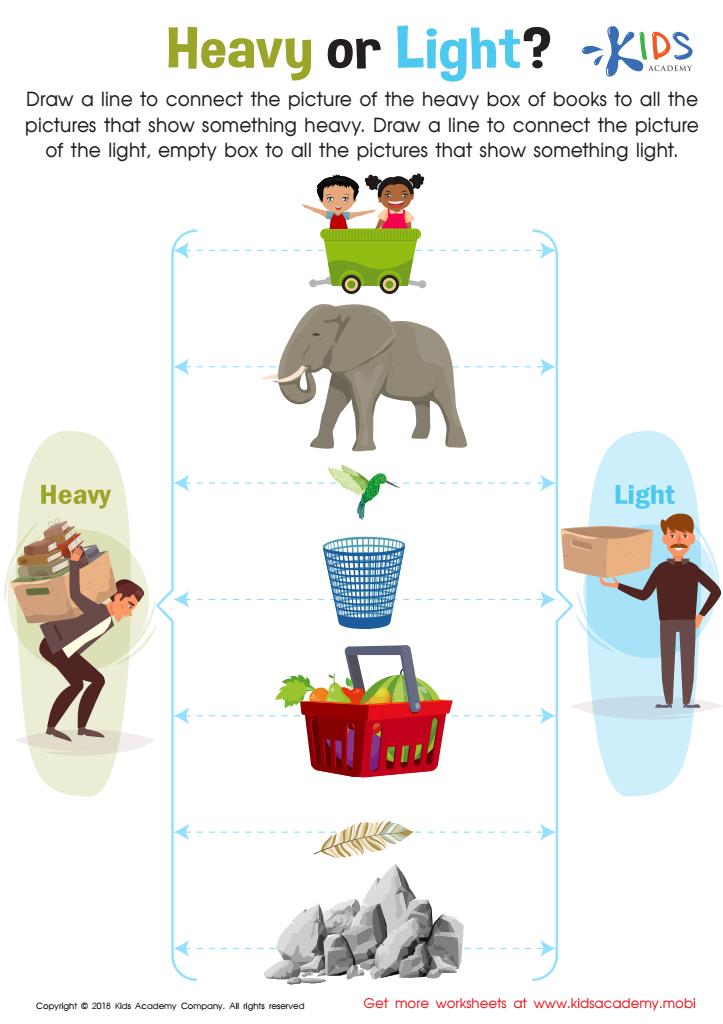

Heavy or Light? Worksheet
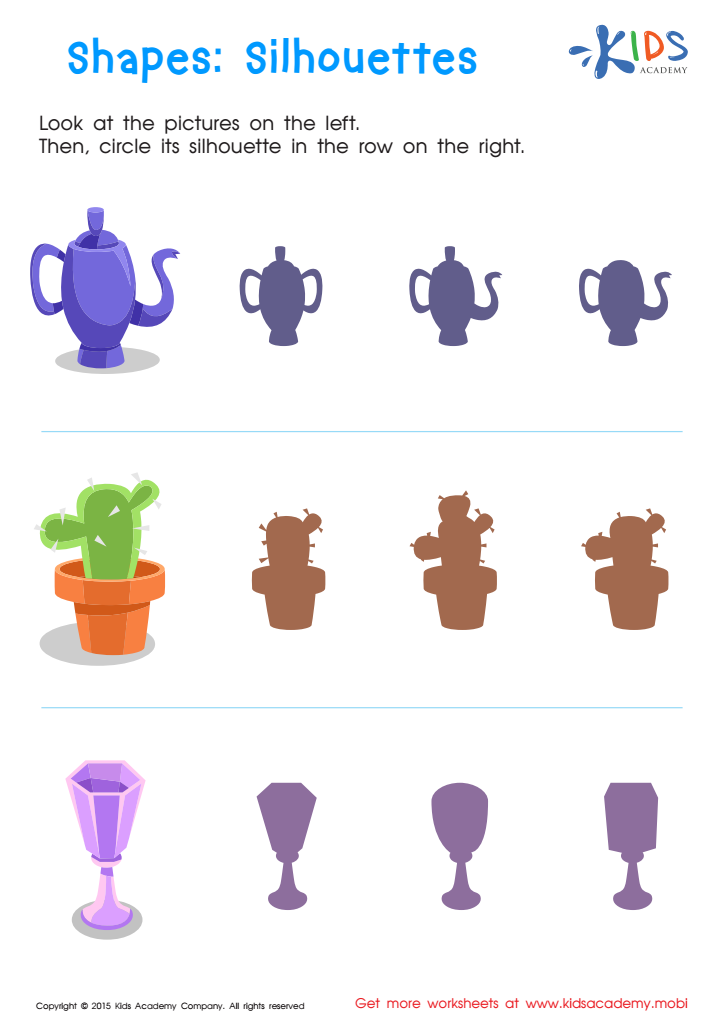

Silhouettes – Shapes Worksheet
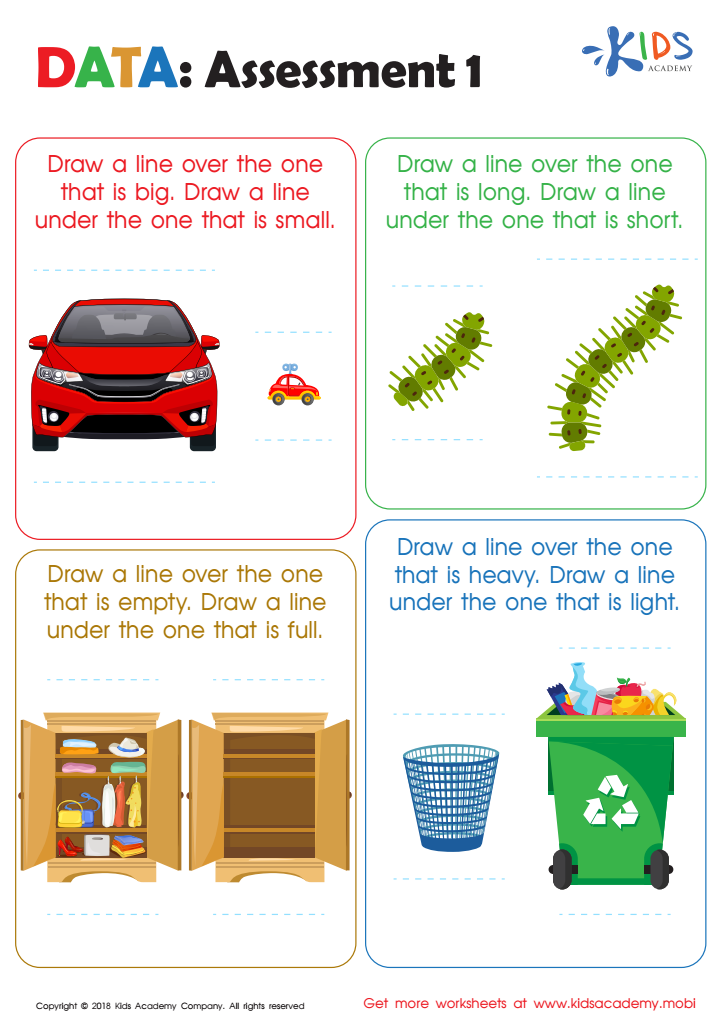

Data: Assessment 1 Worksheet
Normal Comparison for ages 6-7 is a vital tool that helps parents and teachers understand a child's developmental progress across various domains such as cognitive, emotional, and social skills. At this age, children are in a critical period of growth, learning foundational abilities that set the stage for future success. By using normal comparison, adults can identify whether a child is developing as expected or if they may require additional support in specific areas.
This comparison offers insight into reading, writing, mathematics, and social interactions. When parents and teachers are aware of a child's standing compared to age-appropriate norms, they can tailor their approach to better support individual needs. For instance, if a child struggles with literacy, targeted interventions can be implemented to foster improvement.
Moreover, understanding where a child stands relative to peers helps adults celebrate successes and motivate them effectively, while also reducing anxiety or pressure surrounding academic achievements. Recognizing where a child is excelling can inform enrichment opportunities. Ultimately, caring about Normal Comparison equips adults with critical information to nurture well-rounded, confident learners during these formative years, paving the way for a lifelong love of learning.
 Assign to My Students
Assign to My Students



